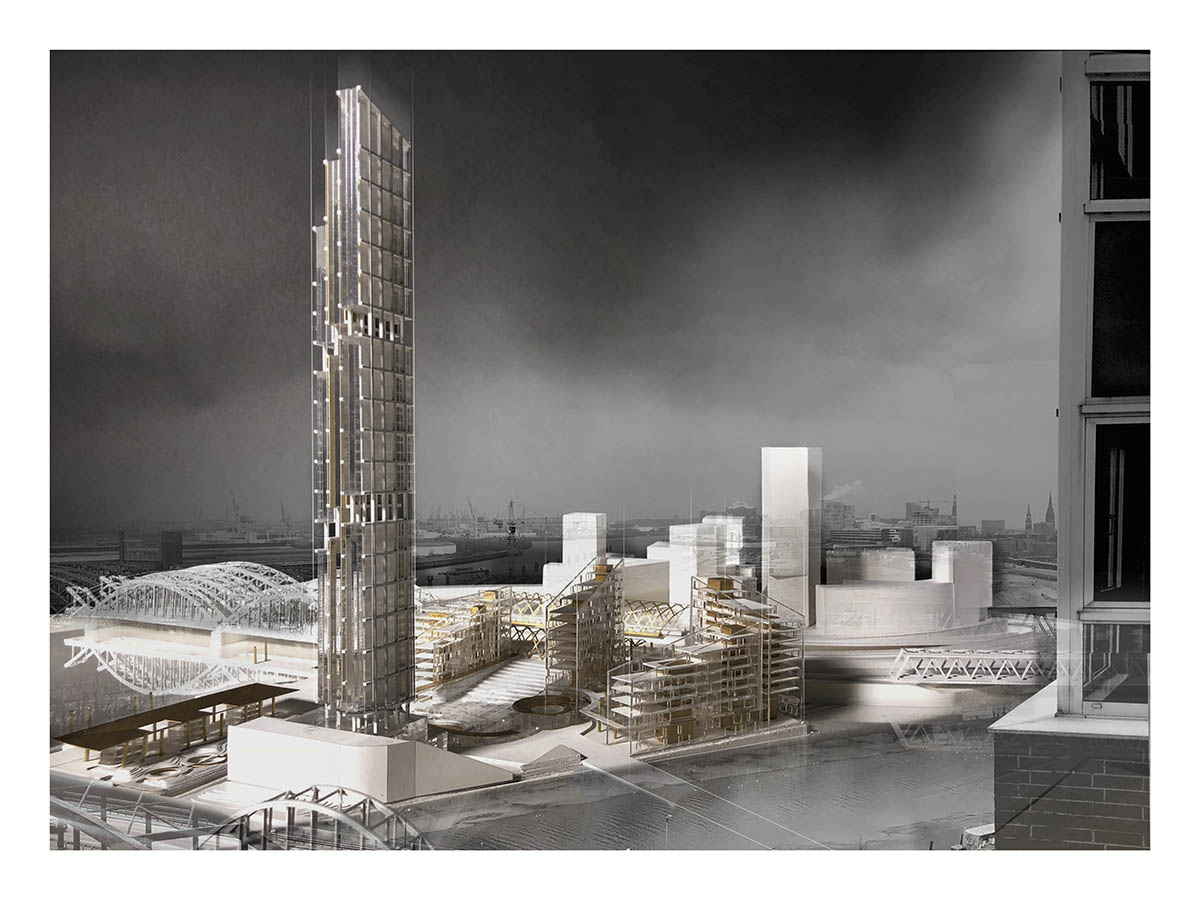Between Earth and Sky: A Building for the HafenCity, Hamburg
The setting for this studio is the HafenCity in Hamburg, which is currently one of Europe’s most ambitious urban transformations. Over twenty years to date, it has involved the recasting of the redundant docklands zone running 2.5 kilometers from west to east along the north bank of the river Elbe. It includes a formidable range of 19th century warehouse buildings (UNESCO listed) and some less successful late 20th century buildings.
The evolving city quarter has the goal of integrating with both the neighboring historic city and newer adjacent districts. To achieve this infrastructure, including flood defense, transportation, innovative power and waste management systems, bridges, pedestrian and cycle ways have been provided. The western prow of the quarter is now marked by the Elbphilharmonie, affectionately known as the “Elphi,” a building whose silhouette now appears on every image of the Hamburg skyline.
The eastern, undeveloped end of the HafenCity is defined by the rail and road bridges marking the historic approach to Hamburg from the south. Here it is intended to build a 200m high tower that will mark the skyline from all directions, adding to a number of significant 20th-century and historic towers.
At the ground, the tower will rise from an area adjacent to the new metro link to both the HafenCity and the historic center of Hamburg. This provides the site and outline program for the studio’s endeavors.
Hamburg is a city that works and plays hard, and the ground offers an opportunity to provide a site for both—perhaps a base for circus or theatre alongside innovative work and civic functions. The tower will offer the opportunity to debate questions of use, priorities, and the particular technologies and construction associated with taller buildings. The project is set within the cultured framework of an important Hanseatic city and it is intended that the semester will begin with a study of these cities and their strong mercantile and tectonic traditions, alongside the question of horizon, the city, continuity, and tradition.
This studio will meet January 18, 19, 31, February 1, 11-16 (site visit), 21, 22, 28, March 1, 21, 22, 28, 29, April 11 and 12. The instructor will be available after and before studio sessions to account for “off-week” missed time.
